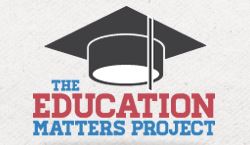Archive for June 29th, 2010
Giving A Good Presentation
 I’ve been giving a lot of presentations recently. A few weeks ago, I posted here on my website about my presentation at Latino Legacy Weekend, and I even wrote a post about my preparation beforehand. Just this weekend, I sat on a panel and discussed leadership and entrepreneurship. A week or two before that, I presented as part of a group at a networking conference in New York City. And in addition to all of this, I’ve had a couple of small presentations for work, and have another one coming up soon for class. And through all of these presentations, I’ve come to learn a couple of things.
I’ve been giving a lot of presentations recently. A few weeks ago, I posted here on my website about my presentation at Latino Legacy Weekend, and I even wrote a post about my preparation beforehand. Just this weekend, I sat on a panel and discussed leadership and entrepreneurship. A week or two before that, I presented as part of a group at a networking conference in New York City. And in addition to all of this, I’ve had a couple of small presentations for work, and have another one coming up soon for class. And through all of these presentations, I’ve come to learn a couple of things.
For one, I learned that presentations are difficult, even for those who may have the gift of gab. I’ve definitely had my share of mistakes in my presentations. That’s because it’s easy to try to cover too much. It’s common to find yourself rushed at the end. And when you start to scramble, it’s easy not to leave everyone with a memorable message.
As a result of both my successes and failures presenting, I thought I’d write up a few lines on the basic things I aim to do in order to make good presentations:
1. Narrow down the topic. Before you start, you should really understand why you are giving the presentation. That means knowing what you promised to deliver to the audience and also what your audience is expecting to hear. And when you have a choice, you should always err on the narrow side, because time always goes by faster than you think.
2. Use a headline-style opener. At the onset, you have to set the tone for the presentation by engaging your audience. One good tactic is a good opening line and opening story. It could be an anecdote or a personal story. It could also be a joke. Just as long as it grabs the audience’s attention, while also reinforcing the topic.
3. Narrow down the presentation. Just like the topic, many people also invest to many ideas in their presentations. And as such, sometimes they can’t get through the whole thing. But even if they do finish the whole thing, many times they end up skipping parts just to finish, the presentation gets too rushed and void of emotion, and the audience gets confused because they are overloaded with too much information. So it often makes sense to take out as much as possible, and anything that’s not critical.
4. Involve the audience. When it makes sense, try to involve the audience. Ask them questions, get them to raise their hands, and make them laugh. Involving the audience is a quick and easy way to get them engaged.
5. Speak slowly. Good presenters also tend to speak slowly. Speaking quickly is a sure fire way to leave your audience behind and confuse them. It also increases the odds that you will slip up over your words or get through your presentation too quickly. On the other hand, speaking slowly gives you more command of the discussion and allows to do think more on the spot if you need to.
6. End strong. A good ending can make up for a variety of flaws throughout the presentation. Do your best not only to summarize and discuss facts, but also compel them by give them something to remember.
While taking these steps is no guarantee of a perfect presentation, taking them will definitely ensure that you’re still more effective. And that’s important for just about every one of us. Because whether you’re in the legal, business, or public interest space, it’s likely that you will find yourselves presenting a lot. And the ability to show that you understand a complex issue and can deliver a compelling message will not only engage the audience but also leave them wanting more.
Good luck with your next presentation!






